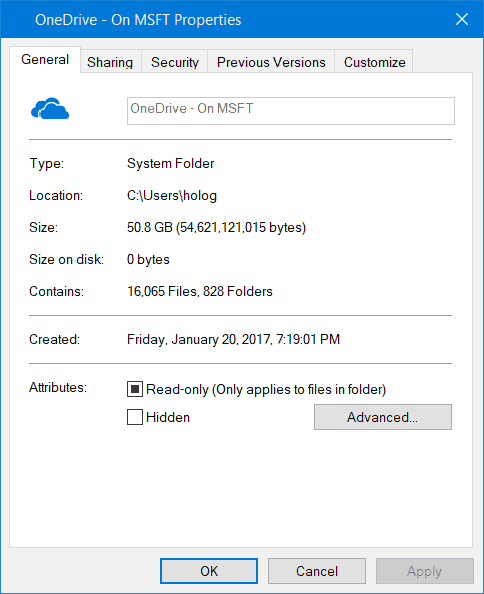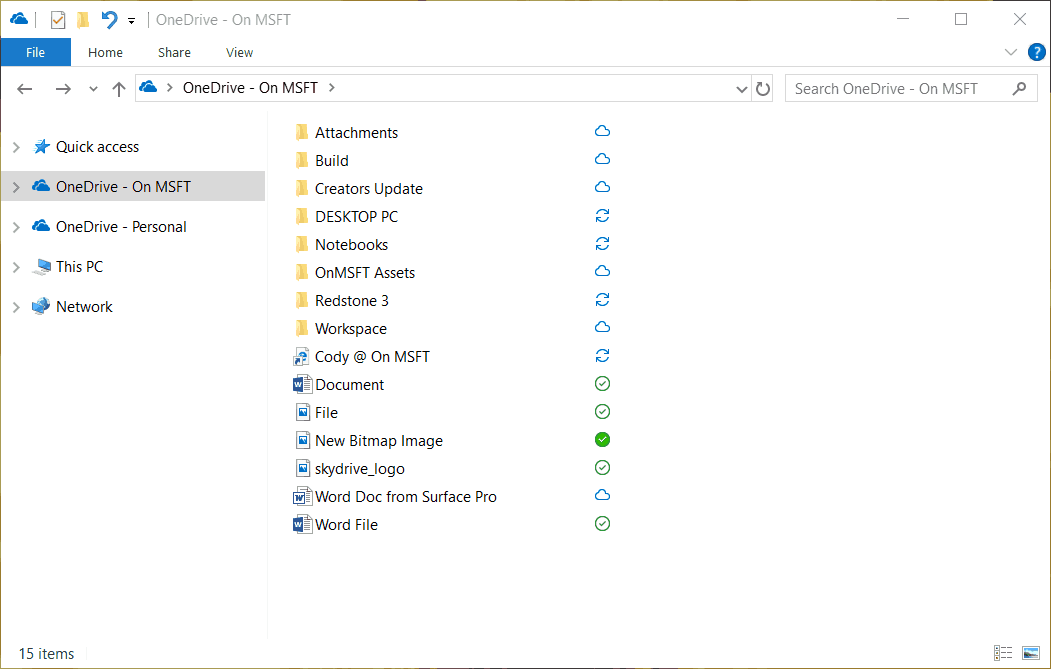One of the best things about OneDrive is that it lets you take advantage of cloud storage without having to put up with a lethargic web browser experience. Since the launch of Windows 10, however, OneDrive lost one of the most beloved features of this integration: placeholders. After almost 2 years, however, we’re finally getting that back. This is OneDrive files on demand.
All the files you deal with are in the file explorer and can be managed as you would expect. Put a file in the OneDrive folder and it will sync in the background to the cloud. If your PC were to explode, no problem! All your files were synced to OneDrive, so after signing into your new PC all your files will begin trickling back down onto your device.
I have 493GB of files synced to my OneDrive this way. I basically keep all the files I use in my OneDrive folder. This is a problem though because my Surface Pro only has 256GB of internal storage, and couldn’t possibly sync my whole OneDrive. SkyDrive handled this problem quite well. It simply didn’t download my whole SkyDrive onto my Surface Pro. It just showed all your files as available online. This is exactly how OneDrive on Demand works.
Opening a file that’s marked as online will sync it to your PC for use, and after closing, it would sync it back up to the cloud. With this, I could have access to all 493GB of files in my OneDrive without them actually being downloaded onto my device. Of course, if you disconnect from the internet all these files will become unavailable. The simple solution to that though is to just make all the files you want to have available offline. This could be a single document or half of your OneDrive library.
It’s easy to tell what files are available when with just 5 little-colored icons that tell you the status of that file.
A cloud icon means that file is just in the cloud, and not taking up space on your PC.
A spinning arrow means that file is currently syncing either up into or down from the cloud.
The green check means the file is currently synced to your PC.
The solid green check means you told your PC to always keep that file downloaded.
A red ‘x’ means there’s a conflict, which doesn’t happen often, say, if you were to upload two files with the same name into the same folder from two different PCs.
You can manually change the status of your documents by right clicking on them.
This is very exciting for me because it’s really a feature that should have never been removed. I’m looking forward to being able to access all my OneDrive files without having to use the awful OneDrive UWP app or lethargic web experience.
This feature is currently available for Windows Insiders on the Fast Ring with build 16215 and will begin rolling out over the next few days. It is a feature that will have to be enabled by the user once it’s received.



